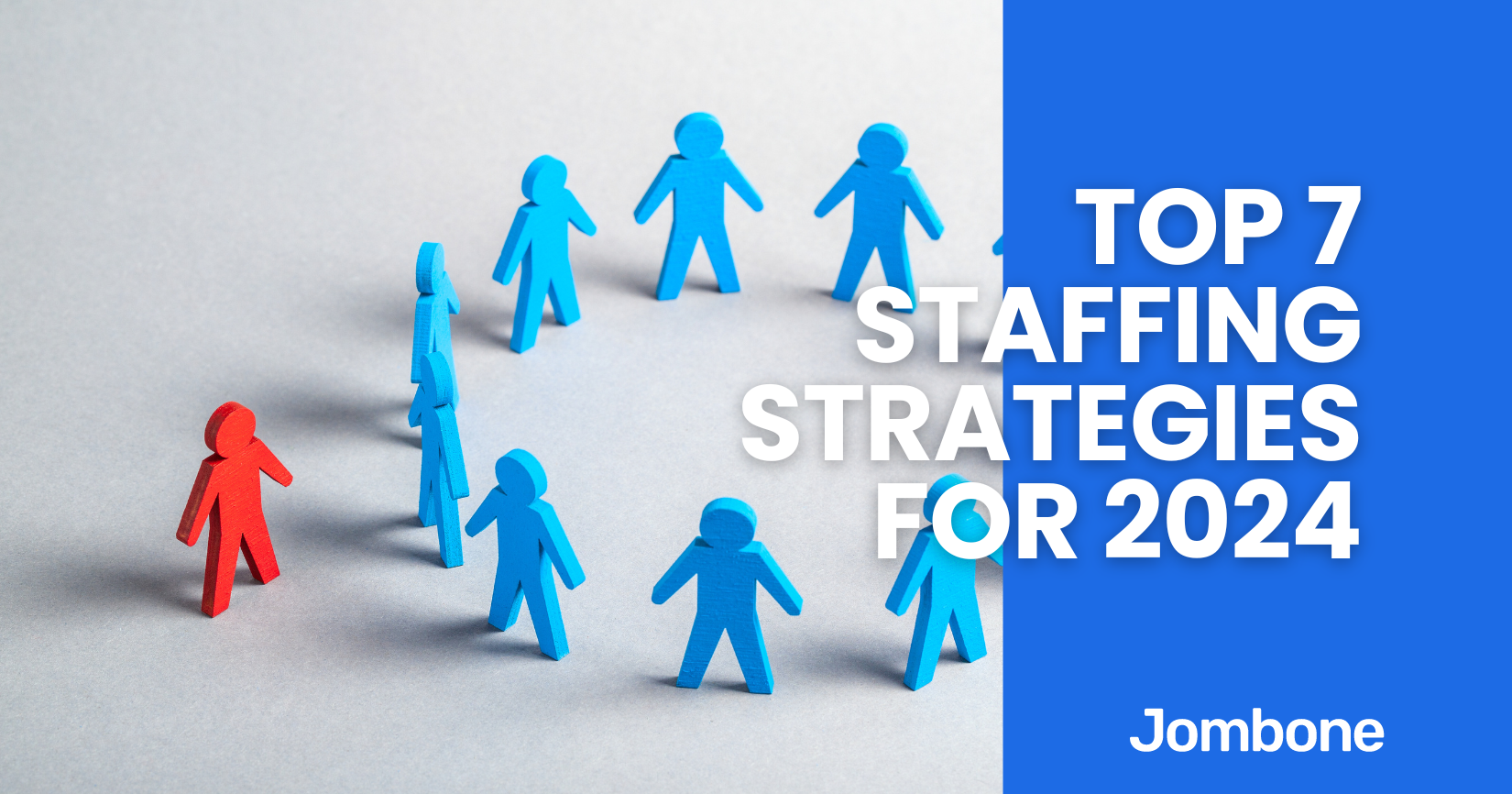As we enter 2024, staffing has become more than just filling positions—it’s about building a workforce that drives business success. The hiring process is shifting toward a more proactive approach, requiring strategies that are both efficient and adaptable. This guide highlights key staffing strategies to help you stay competitive in today’s market.
Whether you’re scaling your team or fine-tuning your current processes, these seven strategies will help you make informed decisions and secure the best talent.
1. Assessing Your Workforce Needs
Effective staffing starts with a clear understanding of your workforce needs. This means going beyond job descriptions and understanding what skills and attributes will drive your business forward.
Are you looking for people who can innovate, manage costs, or fuel growth? Do you need flexibility, or are you looking for employees to grow with your business long-term? By identifying these factors, you can align your hiring strategy with your business goals and create a team that supports sustainable growth.
2. In-House Recruiting vs. Staffing Agencies
One of the key decisions in staffing is whether to manage recruiting in-house or partner with a staffing agency. Both options have their advantages:
In-House Recruiting:
Pros: Greater control over the process, better alignment with your company culture, and the ability to build strong relationships with candidates.
Cons: Requires more resources and ongoing training to maintain an effective recruiting team.
Staffing Agencies:
Pros: Access to a broader talent pool, faster time-to-fill, and flexibility to scale up or down as needed.
Cons: Less control over the hiring process and potential gaps in understanding your company’s culture.
Your choice will depend on your company’s size, budget, and immediate hiring needs.
3. Creating a Data-Driven Staffing Budget
A successful staffing strategy requires more than just a headcount plan. You need a data-driven approach to budgeting and decision-making. This involves using analytics to forecast staffing needs and track spending, ensuring you stay within budget while meeting your goals.
Leveraging data helps you predict future workforce demands and make adjustments in real time, allowing for more efficient use of resources.
4. Utilizing Talent Marketplaces
More companies are turning to talent marketplaces, like Jombone, to find pre-vetted workers. These platforms simplify the hiring process by offering access to candidates who have already been screened for specific roles.
This approach not only speeds up hiring but also reduces the risk of a bad hire, as candidates are carefully matched to your job requirements.
5. Building a Local Talent Pool
Developing a pool of local candidates can help you respond quickly to fluctuating workforce needs. By maintaining a database of pre-qualified workers, you can reduce hiring time and ensure business continuity when demand spikes.
Building strong relationships with the local workforce through community engagement, job fairs, and partnerships with schools or training centers can help you attract and retain talent more effectively.
6. Enhancing Your Employer Brand Locally
A strong employer brand within your community can give you a competitive edge in attracting talent. Engaging with local initiatives, supporting community events, and showcasing your company culture through social media can enhance your visibility and make your organization an attractive place to work.
Encourage your employees to participate in community events and share their positive experiences, which can further boost your reputation as an employer of choice.
7. Adapting to Future Workforce Trends
The workforce is evolving, with more emphasis on flexible, project-based, and remote work options. To stay competitive, companies need to adapt their staffing strategies to meet these changing expectations. This includes offering flexible work arrangements, investing in employee development, and using technology to engage and manage your workforce effectively.
Staying ahead of workforce trends will help you attract top talent and keep your organization agile in the face of future challenges.
Executing These Staffing Strategies
Action Steps: Assess your workforce needs thoroughly, decide whether to manage recruiting in-house or outsource to an agency, and use data to inform your staffing decisions.
Best Practices: Leverage talent marketplaces for faster hiring and focus on building a strong local talent pool. Invest in building your employer brand within the community to attract top talent.
Challenges: Balancing costs and maintaining control over the hiring process, particularly when working with external agencies or vendors.
Innovative Solutions: Partner with local educational institutions to identify and train early talent. Use technology to predict staffing needs and optimize the candidate selection process.
Conclusion: Building a Workforce for 2024
The key to staffing success in 2024 is staying proactive and flexible. These strategies will help you create a dynamic, engaged workforce that supports your business goals. By understanding your needs, leveraging technology, and building strong local relationships, you’ll be well-positioned to navigate the future of staffing.
Hiring is no longer just about filling open positions—it’s about building a team that grows with your business and contributes to long-term success. With the right approach, you can create a company culture that attracts top talent and sets the stage for sustainable growth.
Thank you for reading our blog post! If you enjoyed this content, here are some related articles you may find interesting:

